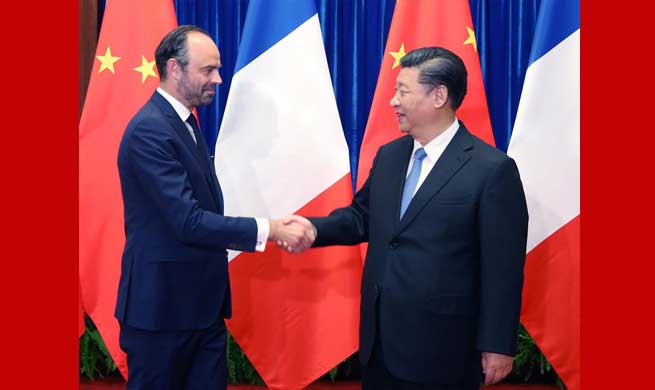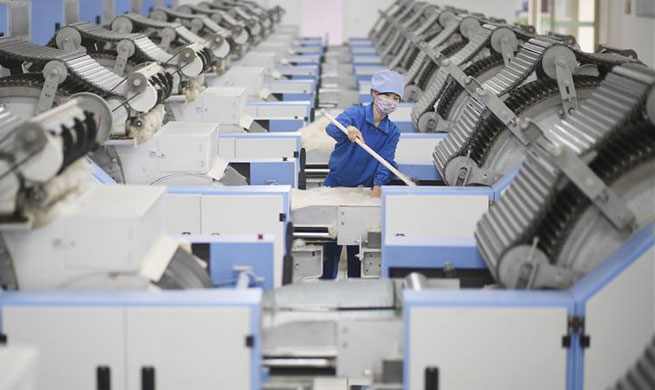BEIJING, June 25 (Xinhua) -- China's central bank remained firm on its monetary stance, but has nimbly managed the pace and strength of its policies to tackle structural problems.
The People's Bank of China (PBOC) announced Sunday that it would cut the reserve requirement ratio (RRR) for some commercial banks by 50 basis points, expecting to unleash a total of 700 billion yuan (about 107.7 billion U.S. dollars) into the banking system.
PBOC said the cut, the third this year following reductions in January and April, was "targeted, precision regulation" and aimed to boost funding for small and micro firms as well as support debt-to-equity swap program. The rate cut will take effect on July 5.
The cut was largely foretold by a State Council statement last week, which said the country would accelerate debt-to-equity swaps as well as make funding more accessible and affordable for small firms through measures including targeted RRR cuts and other monetary policy tools.
To ease the financing strain for small businesses, which contribute about 80 percent of employment, the government has tried a range of measures, including expanding the scope of securities as collateral during medium-term lending facility (MLF) operations to favor small businesses and increasing the relending and rediscount quotas for small companies.
Besides supporting small businesses, analysts say the RRR cut will ease the liquidity strain in the interbank market. It represents another sign of the central bank's policy adjustment, not a shift of monetary stance.
The State Council statement stressed sticking to the prudent and neutral monetary policy, but changed the wording for liquidity management to "keep liquidity at a reasonable and ample level" from the previous "reasonable and stable."
"We have seen early signs of policy adjustment, with the PBOC not following the United States in hiking open market operation rates last week, while stepping up its open market operation net injection visibly," CICC analysts said, adding the adjustment was "much needed" to offset the tightening effect from overlapping policy tightening since November last year.
Over the past two weeks, the PBOC has net-injected 680 billion yuan worth of liquidity into the banking system via open market operations, compared with just 83 billion yuan during the same period last year.
There will be more room for policy adjustment, according to analysts.
CICC analyst Liang Hong expects RRR cuts of 150 basis points in total during the rest of the year, expansion of the bank loan quota, replenishment of banks' capital, as well as publication of detailed and pragmatic guidelines in regards to the financial-deleveraging timetable.
UBS economist Wang Tao said other liquidity tools will be also used, including more MLF and pledged supplementary lending operations.
Wang expects the overall credit growth to stay weak but not fall much further from May's 11.6-percent rise.

















